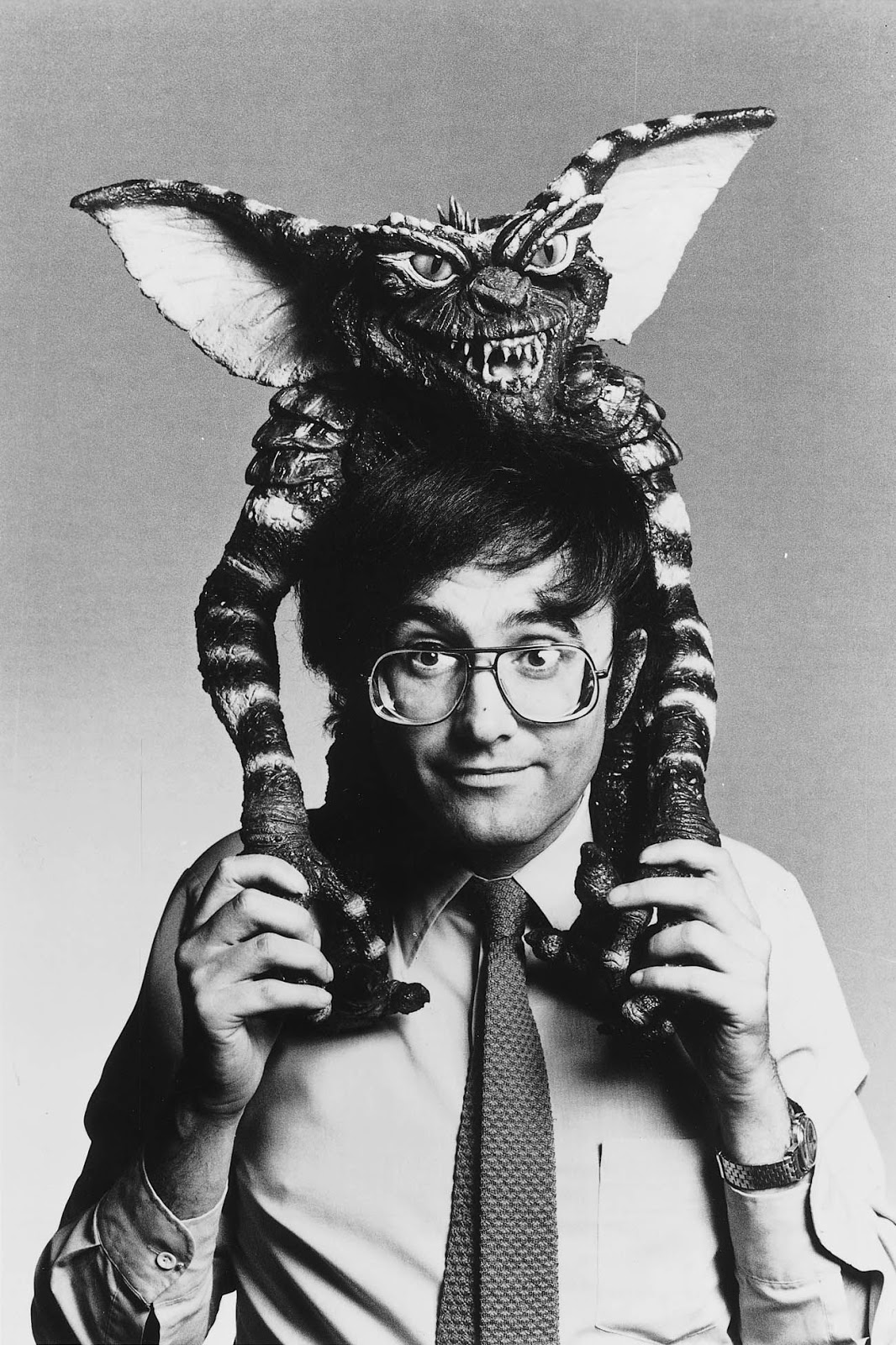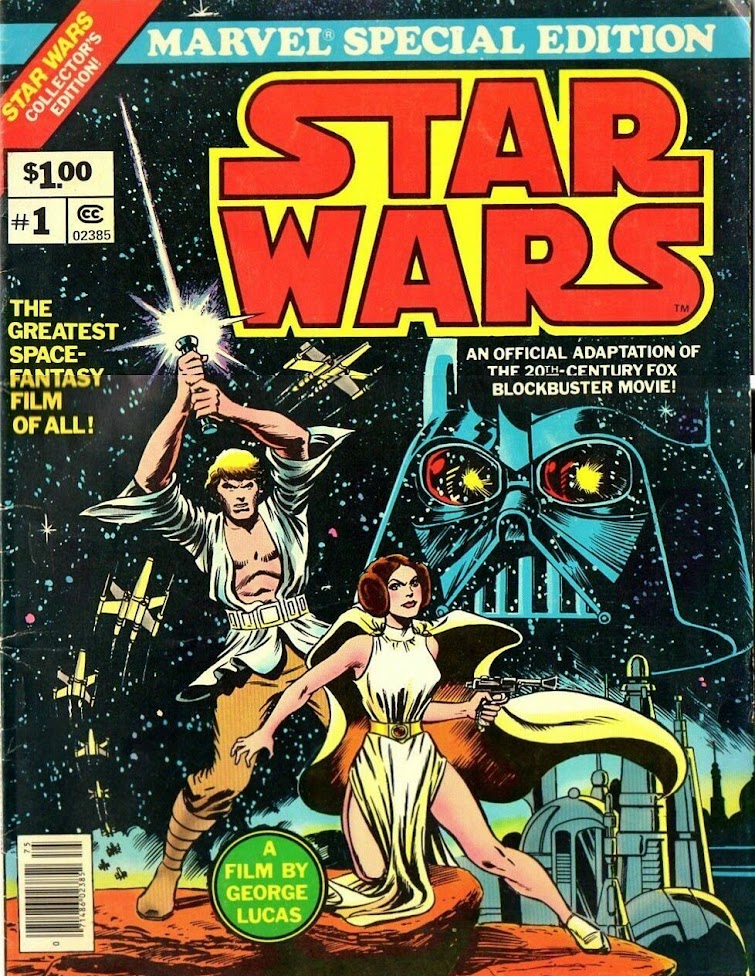Movie Review: JOKER
''The more successful the villain, the more successful the picture.''
I'm sure this quote by Alfred Hitchcock must have floated in the heads of the producing team behind Todd Phillips' JOKER, as they were bringing Batman's infamous nemesis to the screen in his first solo feature. And he certainly has a rich history as a character to warrant such a project.
The Joker was created in 1940, as the main villain in BATMAN #1. Ghost artist Jerry Robinson (at the time, it was common for an artist like Bob Kane, the ''creator'' of Batman, to hire other artists and writers to do the work while he would grab all the credits) developed an idea for an opponent to the Dark Knight, and presented ghost writer and Batman co-creator Bill Finger with a sketch.
 |
| The original sketch Jerry Robinson made of the Joker, inspired by the playing cards that would always lie around the studio. |
Jerry Robinson recalls: "In that first meeting when I showed them that sketch of the Joker, Bill (Finger) said it reminded him of Conrad Veidt in The Man Who Laughs (1928). That was the first mention of it...He can be credited and Bob (Kane) himself, we all played a role in it. The concept was mine. Bill finished that first script from my outline of the persona and what should happen in the first story. He wrote the script of that, so he really was co-creator, and Bob and I did the visuals, so Bob was also."
 |
| The first appearance of the Joker in BATMAN #1 (March 1940), written by Bill Finger, and illustrated by Jerry Robinson and Bob Kane. |
The resulting story presented the Joker as a brilliant homicidal maniac, cleverly plotting the murders of affluent Gothamites without even getting his hands dirty. Over the following decades, his modus operandi would change to reflect the lighter tone the Batman series would eventually take, and the ''Clown Prince Of Crime'' would instead specialize in colorful bank heists and eccentric, flamboyant crimes. He became literally a pesky clownish criminal. The influence of the Comics Code Authority set up in 1954, after Frederic Wertham's infamous studies linking the rise in juvenile delinquency with the violence in comic books, also had a lot to do with the taming of the Joker's personality. It's quite ironic that a variation on Wertham's theories are resurfacing now in an attempt to find culprits in the media for the rise of gun violence, while turning a blind eye to the proliferation and easy access to automatic weapons. But that's a debate for another time.
 |
| The Joker acquires a Jokermobile and a Jokerplane, in a contest to see who has the most wonderful toys, in BATMAN # 37 (October 1946). Cover by Jerry Robinson and George Roussos. |
It's in the early seventies that the Joker would return to his roots, after having vanished from the comics for 4 years, due partly to DC's editor in chief Julius Schwartz dislike of the character, and a well starting to run dry dry for stories about a goofy prankster eager to oppose Batman, who was himself slowly reverting to the Dark Knight Detective personae he exhibited in the late thirties. In ''The Joker's Five-Way Revenge'', the character's desire to get revenge on a snitch pushes him to attempt murder on his previous accomplices, only to be stopped by Batman. Writer Dennis O'Neil and legendary artist Neal Adams would bring back the Joker with a vengeance, clearly re-establishing him as Batman's number one foe, as well as a murderous lunatic. Other artistic teams like Steve Englehart and Marshall Rogers, Frank Miller and Jim Starlin and Jim Aparo would all contribute over the following decades in making the Joker the most influential villain in Batman's rogue gallery.
He even became the first villain to get his own series with THE JOKER in may 1975. (prompting Marvel Comics to follow suit a few months later with their own SUPER-VILLAIN TEAM-UP series in August of the same year). The gamble had limited appeal though, and the series got cancelled after 9 issues. (as a matter of fact, an unpublished 10th issue just saw the light of day the same week JOKER opened.)
 | ||
| The Joker's return to form in BATMAN 251 (September 1973), written by Dennis O'Neil and illustrated by Neal Adams. |
Strangely enough, it took years for the Joker to finally get an origin story, which he did in ''The Man Behind The Red Hood'', written by Bill Finger in 1951 for Detective Comics 168. In it, the criminal mastermind the Red Hood falls into a vat of acid during a failed heist, interrupted by that pointy-eared meddler Batman, only to emerge with white skin and green hair.
 |
| The origin of the Joker, as displayed in DETECTIVE COMICS #168 (February 1951). Written by Bill Finger and illustrated by Lew Sayre Schwartz and George Roussos. |
Indirectly, this origin story leads us slowly towards the interpretation in Phillips' new film, by way of Alan Moore's masterful retelling of the Red Hood story in the classic Graphic Novel THE KILLING JOKE (May 1988). In it, the man under the Red Hood isn't a master criminal, but a patsy, who in real life is a failed stand-up comic in dire need of money. While Joaquin Phoenix gets nowhere near a vat of acid in JOKER, he is a wannabe stand-up comic, living in squalor with his ailing mother. Afflicted by a medical condition causing sudden fits of laughter, belying his real emotional state, and making him a social recluse, not unlike the permanent grin on Gwynplaine's face in Paul Leni's THE MAN WHO LAUGHS (1928).
Obviously inspired by 1970s American films set in New York, in particular films by Martin Scorsese,
and sporting a gorgeous grainy cinematography by Lawrence Sher doing his best to evoke that era, JOKER immediately brings the viewer back to those streets of a Rotten Big Apple by way of Gotham, and when Joaquin's Arthur Fleck runs on the sidewalk after his tormentors dressed as a clown, it recalls the similar surreal scene of Gene Hackman's Popeye Doyle pursuing a crook in THE FRENCH CONNECTION (William Friedkin, 1971), while wearing a Santa Costume.
The references continues, with Fleck's obsession with a late night talk show host (not surprisingly played by Robert De Niro) mirroring De Niro's Rupert Pupkin's similar delusion in Scorsese's THE KING OF COMEDY (1983), even featuring comparable scenes where the protagonist imagines meeting their respective idols in more than favorable and unrealistic circumstances. Fleck also shares some DNA with TAXI DRIVER's Travis Bickle, getting a gun from a co-worker as a mean to protect himself, obsessing on a politician and a woman, and rehearsing macabre scenarios in his living room.
If anything, we could probably accuse director Todd Phillips of being too slavish to the style of cinema he tries to emulate, but then again, we might as well blame Tarantino for the same sin. In itself, the exercise of telling the Joker's story in that particular style and setting was actually an inspired one, although it might be too high a mark to aim for, as it can be argued without a doubt that Phillips is no Scorsese. The comparison would be unfair if he didn't try so hard to mimic the master. But he makes a valiant effort.
Filmmaker Michael Moore recently applauded the film and its political stance. Indeed, Arthur Fleck is ultimately the victim of an uncaring system which makes cutbacks in social and health services, while the rich, including Thomas Wayne, Bruce Wayne's father, wallows in their increasing wealth, and ignore the poor, prompting a revolution to grow among the disenfranchised. A movement that the Joker becomes unwillingly the symbol for.
 |
| Joaquin Phoenix' JOKER basking in the glow of his first kill. |
Joaquin Phoenix' interpretation has been widely lauded and with reason; his Joker is both creepy and vulnerable, and the madness is always hiding behind his posture, his stare or his ticks. The look he gives his boss when he is been chewed out for losing a sign during on of his stints as a clown is positively frightening. His transformation as he realizes how his actions are influencing a movement, and elicit support and sympathy from the masses, not unlike how Bernhard Goetz's shooting of four muggers in a New York Subway in 1984 turned him into a vigilante hero, demonstrates clearly his skills as an actor, something that may be remembered at next year' s Oscar ceremony. Unless politics gets in the way.
 |
| The 1984 headline-maker, Bernhard Goetz, who partly inspired the script for JOKER. |
In fact, the question has been raised many times in the media if it was a good idea to focus on a villain in a film, fearing how the sympathetic portrayal of a murderous loner may inspire deranged lone wolves or frustrated incels into going into the same kind of destructive path our twisted clown goes through in the movie. It's not my place to judge on the validity of this assumption, although I may point out that even so-called ''heroes'' in movies tend to act in a way that, if emulated, would normally result in frequent convictions and murders.
Obviously, if one choose to view in the first degree the journey the character goes through in the film, leading to a seemingly triumphant moment near the conclusion, I can see how it could be perceived as problematic, as it apparently elevates a deranged murderer onto a pedestal. However, there is a serious case to be made for a lot of events taking place in the film being in fact part of the Joker's fertile imagination.
Some plot points in the movie are early on revealed in fact as being delusions. So it's not impossible that others may be as well. It wouldn't be the first time that the Joker's past was defined as being muddled. In Christopher Nolan's THE DARK KNIGHT (2008), Heath Ledger's Joker would never tell the same story twice about the origin of his facial scars. And in the aforementioned THE KILLING JOKE, the Joker would say about his past: '' I'm not exactly sure what happened. Sometimes I remember it one way, sometimes another... If I'm going to have a past, I prefer it to be multiple choice!''
 |
| The Joker's grasp of the past is fragile, as expressed in this page from THE KILLING JOKE (May 1988), written by Alan Moore and illustrated by Brian Bolland. |
Add to this the fact that in a recent interview, Todd Phillips called the Joker an ''unreliable narrator'', you can take pretty much everything that occurs in the film with a grain of salt, as either an elaborate lie told to his psychiatrist, meant to get a certain amount of sympathy, or a figment of his crazed, megalomaniac imagination.
When all is said and done, JOKER remains an effective, thought-provoking and somewhat depressing film that will not be for everyone. I loved the tone and the mind-fuck it tries to create, and its sense of stark realism , but it tries probably a bit too hard to deceive comic book fans expectations by seemingly straying away from the DC comics canon. Yet in a way, Cesar Romero (in the classic 66 TV series), Jack Nicholson (in Tim Burton's 1989 film), Mark Hamill (as the voice actor for many animated incarnations of the character since 1992), Heath Ledger and even Jared Leto (in the misguided SUICIDE SQUAD movie in 2016), as different as they are, all correspond in one way or another to a specific incarnation of the Joker as he appeared in the comics over the years, if not in looks, at least in spirit. This latest one is probably the most tragic and relatable one, and in many ways, the scariest.






Comments
Post a Comment